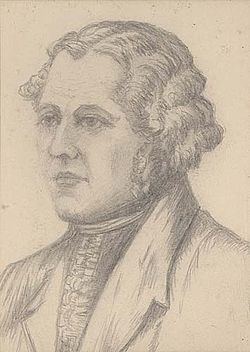Nationality English Name William Booth Occupation Farmer Role Forger | Died August 12, 1812 Conviction(s) Forgery | |
 | ||
Born 1776, 1778 or 1779 Hall End Farm near Beaudesert, Warwickshire, England | ||
Criminal penalty Death by hanging | ||
William Booth (died 12 August 1812) was an English farmer and forger. He is the subject of the song "Twice Tried, Twice Hung, Twice Buried" by John Raven.

Booth was born at Hall End Farm near Beaudesert, Warwickshire in 1776, 1778 or 1779. He was one of eight children of a farmer and church warden, John Booth, and his wife Mary. He lived at Great Barr, then in Staffordshire and now in the city of Birmingham.

On 28 February 1799, Booth signed a 25-year lease for what became known (by 1821 if not earlier) as 'Booth's Farm', including a farmhouse and 200 acres of land, part of the Perry Hallestate.
He was accused of murdering his brother John while revisiting Hall End on 19 February 1808, but was acquitted for lack of evidence.
He converted the top floor of the farmhouse into a workshop where he produced forgeries of coins and banknotes. He was caught, tried at Stafford Assizes and sentenced to hang. His accomplices were sentenced to transportation to Australia.
Booth's execution on 12 August 1812 was bungled, and he fell through the scaffold's trap door to the floor. Within two hours, he was hanged again and died. He was one of the last people (if not the last) to be sentenced to death in England for forgery.
He is buried in the churchyard of St Mary's, Handsworth. The inscription on his gravestone reads:
Sacred to the memory of William Booth who departed this life August 12th 1812 aged 33 years. Also Charlotte daughter of William and Mary Booth who died August 13th 5 months.
Following a change of county boundary, his body was disinterred and reburied.
Booth also minted genuine tokens as a cover for his forging activities. Several of his tokens, forgeries and printing plates are in the collection of Birmingham Museum & Art Gallery.
The farmhouse was demolished in 1974, and the farm became a sand and gravel quarry (later landfill and a nature reserve), having given its name to the still-extant Booths Lane and Booths Farm Road. Until the late 1920s, it was occupied by the Foden Family, commemorated in Foden Road.
